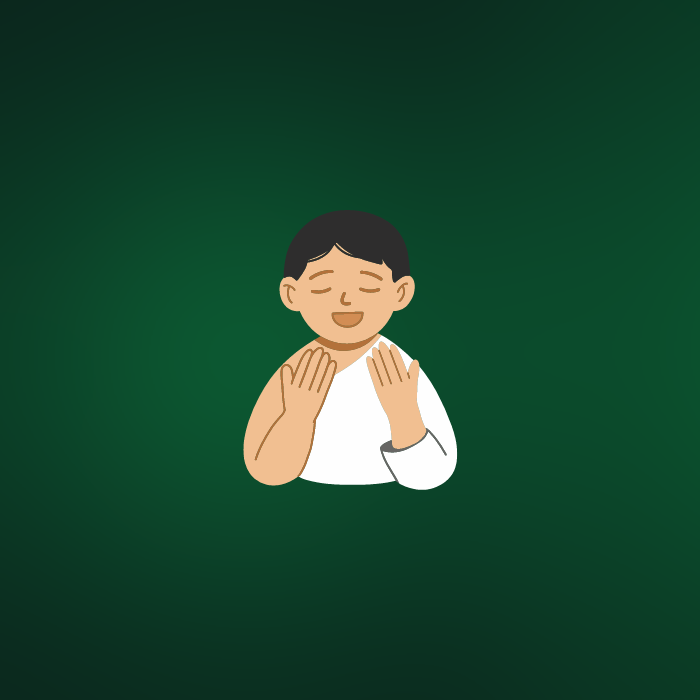What shoes do I wear during Hajj or Umrah?
Hajj and Umrah are sacred pilgrimages requiring specific preparations, including adherence to dress codes that symbolise humility and equality. Part of this includes wearing approved footwear—sandals that leave certain parts of the foot exposed. These guidelines ensure the pilgrim remains in the state of Ihram. Later, we’ll explore the specifics of suitable footwear for Hajj and Umrah to help you stay comfortable while meeting the necessary requirements.What to Wear and What Not to Wear?
In the state of Ihram, men are required to wear footwear that leaves the ankles and the instep (the top part of the foot) exposed, as per Islamic guidelines for Hajj and Umrah. This means choosing slippers or open-toe sandals that keep most of the foot visible, aligning with the principles of humility and simplicity. The majority of scholars (Maliki, Shafi'i, and Hanbali) interpret the required exposed area, or "ka'b," as the ankle bone, while some Hanafi scholars extend this to include the instep, encouraging a more exposed look.

Such sandals or slippers provide both comfort for long hours of walking and compliance with Ihram requirements. Women have more flexibility in footwear choice, though maintaining simplicity and modesty remains essential. If suitable sandals are unavailable, wearing socks that are cut below the ankle is permissible.

The Hadith on Ihram Garments
In a famous hadith, a man asked the Prophet Muhammad (peace be upon him) about the appropriate garments for a pilgrim in Ihram. The Prophet (peace be upon him) replied: "He should not wear chemises, head coverings, pants, burnooses, or khuff (leather slippers), except for one who cannot find sandals, in which case he may wear khuff, but he should cut them so that they come lower than the ankles."
Benefits of Wearing Slippers in Ihram
Why slippers, you might ask? Well, they provide several benefits, particularly in the hot and bustling atmosphere of Makkah and Madinah. Here are a few reasons why slippers are a great choice:
- Easy to Put On and Take Off – Perfect for the many times you’ll need to remove your footwear when entering the masjid.
- Comfortable and Breathable – With temperatures often soaring, open shoes allow your feet to stay cool.
- Simple and Modest – Slippers and sandals fulfil the requirement for modesty in footwear while in Ihram.
- Affordable and Accessible – They are easy to find and won’t break the bank, Alhamdulillah.
Types of Shoes to Wear in Ihram
There are several types of permissible shoes you can wear during your pilgrimage. These include:
- Sandals: The most common option, flat, soft, and open, exposing most of the foot. White is the preferred colour, as it reflects the purity of Ihram.
- Slides: Similar to sandals but with a single strap over the foot, making them easy to slip on and off.
- Flip-flops: Lightweight, flexible, and with a thong between the toes, they’re practical and comfortable for long walks.
Shoes to Avoid in Ihram
Not all shoes are allowed in Ihram. Here are some to avoid:
- Khuff: Leather slippers that cover the entire foot, including the ankles, are not permissible unless you are unable to find sandals.
- Sneakers: Fabric or synthetic shoes with laces or velcro that cover the entire foot.
- Socks: These are only allowed if no slippers are available, and they must be cut below the ankle.
By following these guidelines, you’ll not only stay comfortable but also ensure your pilgrimage is in line with Islamic rulings, Insha’Allah. May Allah (SWT) accept your Hajj or Umrah and grant you ease every step of the way.
Hajj Safe
This guide was written by Hajj Safe, a company dedicated to creating secure and practical travel accessories for pilgrims. We offer a range of Hajj & Umrah products including; Hajj & Umrah bags for Women, Ihrams and Bags for Men to keep your valuables safe during Hajj and Umrah. For more information, explore our products here: Hajj Safe.


